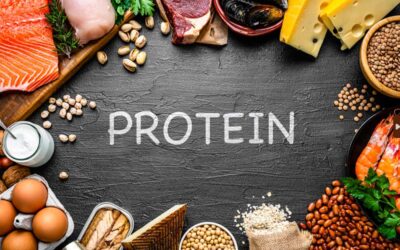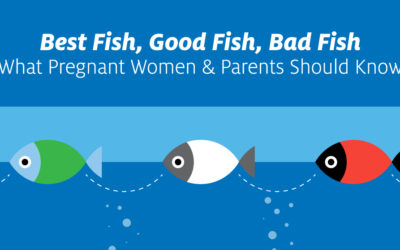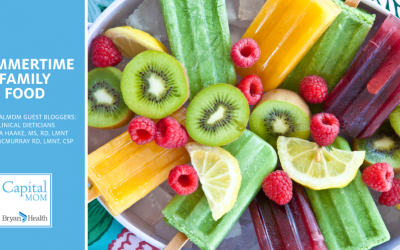As a doctor, I get a lot of questions about how much protein we actually need. There is so much information available to us that finding the “right” answer can be hard. Protein is an important part of a well-balanced diet. However, getting the correct amount is just...
Food & Nutrition
Multiple Sclerosis and Dietary Changes
As a neurologist and subspecialist in multiple sclerosis, I am dedicated to helping patients with MS live their best lives. Many patients have questions about how dietary changes can impact their life. You will find that a well-balanced diet fuels your body and...
Mindful Eating vs. Emotional Eating: 6 Steps for Success
What is emotional eating? Emotional eating is generally when we eat as a way to suppress or soothe negative emotions such as stress, anger, fear, boredom, sadness and loneliness. When we work to reduce emotional eating, it is important to be aware of behaviors we can...
How I’m Developing Healthier Eating Habits
I have shared that I loathe cooking and baking of any sort with you all before, however, I do value nutrition. I seek out blogs, conversations and articles about healthy cooking, providing healthy snacks and connecting with food. I recently listened to a sports...
How to Break a Sugar Habit
Have you ever wondered why once you eat something sweet, you keep craving more sugar? It’s not a coincidence; sugar addiction is real! If sweets are getting in your way of achieving your health goals, you CAN break the habit! In today’s society, we eat ‘dessert’...
Finding Joy in Cooking
I find joy in many aspects of my life. However, at the beginning of December, I was DONE. I was done finding joy. The joy in cooking, that is. I LOATHE cooking. Who in the world should expect a healthy meal for lunch, supper and breakfast, anyways? I hate recipes that...
Fish Oil Benefits: New Research May Surprise You
Many of us have heard of fish oil and how it can benefit heart health, and as a cardiologist, I get asked a lot of questions about it. The truth is, studies vary on this supplement. Here is information from recent studies that provide insights into the benefits of...
Drinking In Front of My Kids
With football season less than a month away (fingers crossed) and the potential for e-learning, there seems to be more alcohol in our household. Let’s be honest, my children are the reason I drink; therefore, I can drink in front of my children. In fact, given the...
Foods & Exercises to Reduce Your Arthritis Pain
The pain and discomfort of arthritis can have a big effect on your quality of life. A good exercise program and a healthy diet have been shown to increase your mobility (ability to get around) and provide medication-free pain relief.
Advice About Eating Fish: What Pregnant Women & Parents Should Know
Can you eat too much Salmon or Tilapia? A healthy diet during pregnancy is important for the proper growth and development of your baby. As a specialist in Maternal-Fetal Medicine, I am often asked about eating fish during pregnancy. How much fish can I eat? Can I...
Is My Child a Picky Eater or Problem Feeder?
Chicken nuggets, corn dogs, french fries, grilled cheese…repeat, repeat, repeat! Sound like a familiar menu in your household? Kids tend to gravitate toward processed, bland foods because these foods are predictable and easy to eat.
Is It Possible to Eat Healthy on a Budget with Kids?
No caffeine, no alcohol, no dairy, no gluten, no processed foods, no refined sugars and no eating after 7 p.m. I decided it was time to challenge myself and start the 10-Day Shred.
Your Guide to Healthy Holiday Eating
It’s that time of year again! Holiday parties and family gatherings can make eating healthy difficult—especially if you’re trying to maintain a healthy weight or follow a heart-healthy or diabetic diet.
Dealing with Picky Eaters
Sometimes, I wonder if I’m grooming my children to be picky eaters as adults. All parents try to feed their children a well-balanced diet.
Put a Stop to Stress Eating
With fall just around the corner, there are so many changes happening—the weather getting cooler, school starting, and everyone seems to have a fall project or two to complete before the holidays.
24 Ears of Corn, 1 Grandson, and a Happy Grandma
I always love the fall season. The smells of burning wood in the fire pit. The sounds coming from the high school marching band. The tastes of apples and sweet corn always bring back lots of childhood memories.
Ditchin’ the Drive-Thru
It’s 5:30 p.m. You are rushing home to pick up your middle child so you can turn around and get out the door in time to get him to basketball practice across town by 6 p.m. You also have to pick up your oldest from play practice at 8 p.m.
Delicious DIY Summer Recipes for Toddlers
What to feed a toddler? That is a loaded question! In a society that has daily reviews of what our food is really made up of such as artificial dyes, GMO’s, hormone exposure and so on; I have decided to be a very conscious mom about what I’m feeding my daughter.
Summertime Family Food
As a full time dietitian, wife to a busy husband and mother to three active children (11, 8 and 6), it is difficult to keep everyone on track and eating the right foods when school is out of session.
Around the Dinner Table
Does your family eat at least one meal a day together? And I mean sitting at a table — not perched in front of the television.
Use Our Symptom Checker
Whether it’s a rash, your child’s ear pain or your aching back, our symptom checker can help determine what to do. Just answer a few questions about your symptoms and receive recommendations for care.
Find a Doctor
Find the right provider for you. Search by specialty, view provider videos and even schedule an appointment online. Life’s busy, we make finding a provider fast and easy to fit your schedule.
Stay Informed for Your Health
You and your family are unique. At Bryan Health, we have a variety of classes, events, podcasts and more for all stages of life.
To stay in the know, subscribe to our monthly For Your Health email!
Tune in to…Bryan Health Podcasts
Our 10-minute podcasts provide practical, useful advice for a lifetime of good health.
And they’re easy to listen to while you’re on the go, at work or at home. Listen to or download a free podcast today!
Register for the Bryan Baby App
Access pregnancy, childbirth and newborn care resources anytime, anywhere.
The Bryan Baby App includes the tools and support you need at every stage of your pregnancy journey and beyond.





















